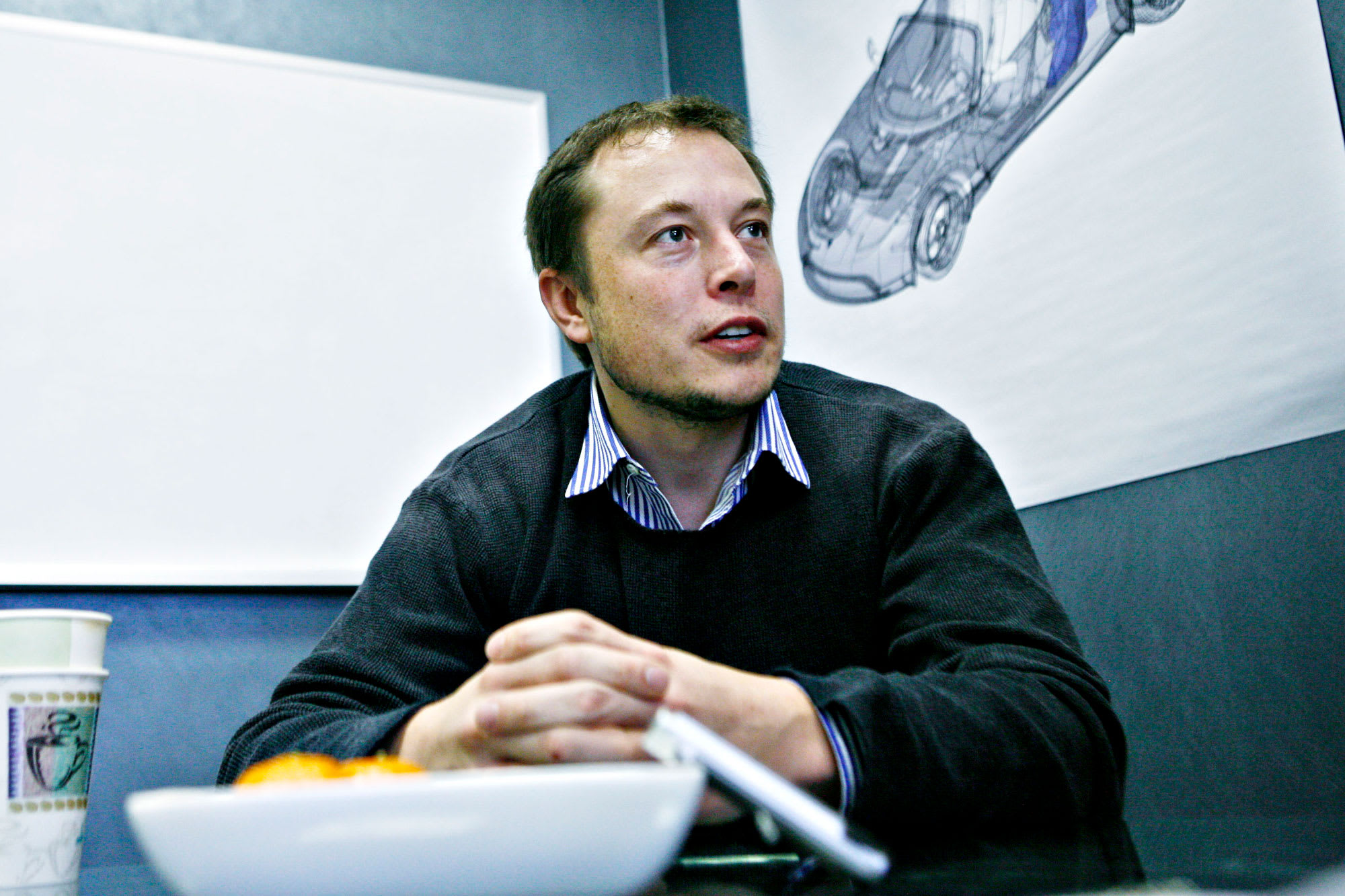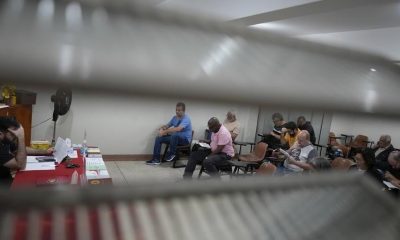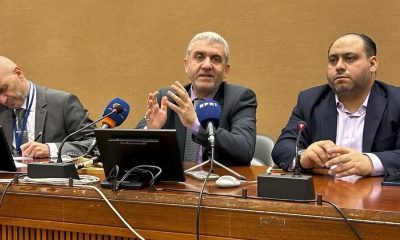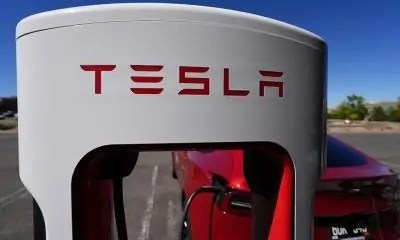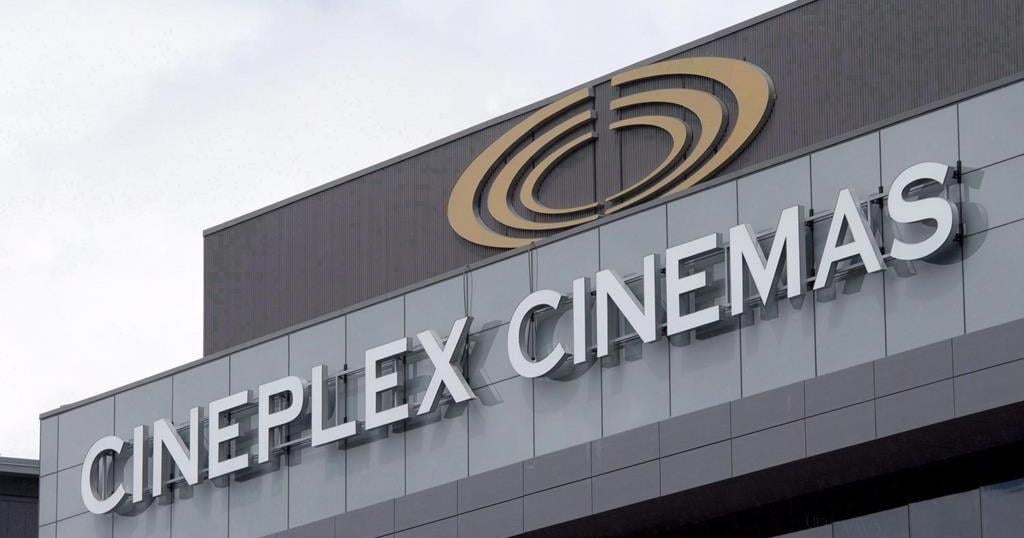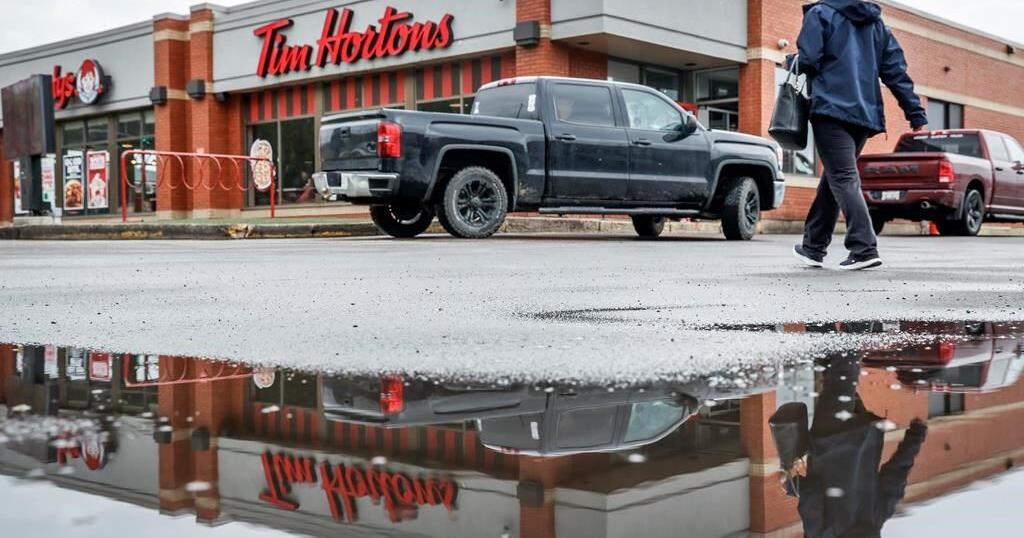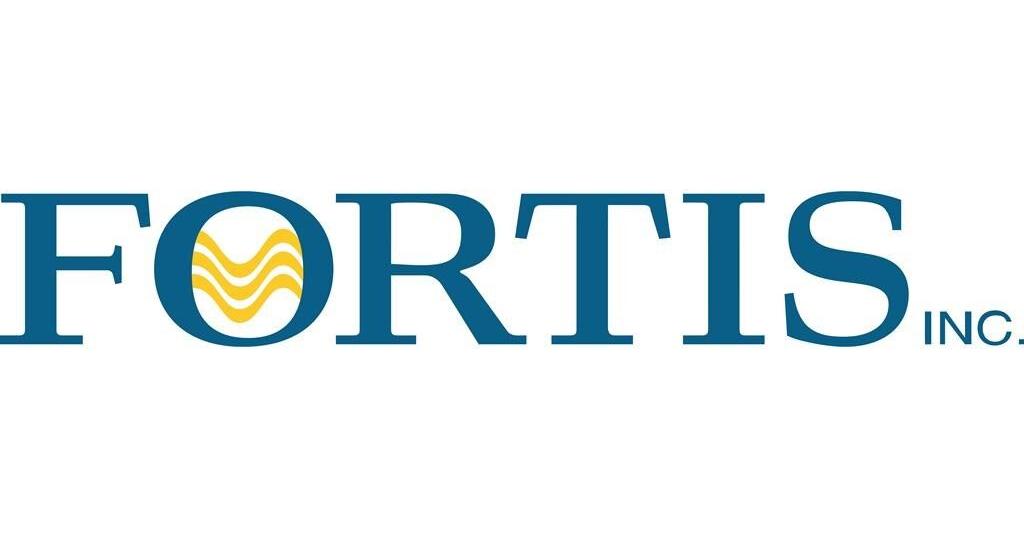Thanks in large part to Tesla, Elon Musk is an icon and a very rich man — the company’s market cap reached $100 billion for the first time on Jan. 22 and its stock surged Thursday after reporting higher than expected earnings for the fourth-quarter. If Tesla continues to hit stock milestones, Musk could earn an enormous compensation package, including options worth more than $55 billion.
But in the beginning, “I really didn’t want to be CEO” of Tesla, Musk said in a recent episode of the Third Row Tesla podcast.
In fact, Musk had a very different idea on how he’d spend his time with the company.
In 2003, a 32-year-old Musk (who had recently become a millionaire thanks to two successful start-up sales) was inspired to build an entirely electric sports cars after test driving an electric car model called the tzero, he recalled in the podcast.
“[The first tzero model] literally didn’t have doors or a roof, or any airbags or an effective cooling system. It was not safe or reliable,” he said.
According to Musk, the model’s maker, AC Propulsion, had no interest in bringing the tzero to market, but he felt strongly it could work. So Musk asked AC Propulsion founder Alan Cocconi and CEO Tom Gage if he could commercialize the tzero, he says. They agreed, according to Musk.
At the time, only hybrid electric vehicles (with both gas and electric motors on board) had hit the U.S. market: Honda released its Insight in 1999, and Toyota released the Prius in 2000.
The only problem with starting an electric car company was that Musk had founded aerospace company SpaceX just a year earlier and didn’t want to take on another start-up. At SpaceX, he was already working 80 hours a week and he wanted to avoid working 160 hours a week, according to the podcast.
So AC Propulsion CEO Gage suggested Musk speak with electric car start-up Tesla Motors, which was also looking to commercialize the tzero. Musk reasoned that by teaming up with another company, he could “have my cake and eat it too,” he said on the podcast – he could still run SpaceX but also pursue his passion for electric cars in his spare time.
“I didn’t think it would be easy, but I thought maybe I could allocate 20 to 30 hours a week and just work on product engineering, and then other people could do the other stuff. I didn’t like doing the other stuff anyway,” Musk said.
“But that didn’t work out.”
With money Musk earned as a co-founder of PayPal, which eBay bought for $1.5 billion in 2002, Musk invested $6.3 million in start-up Tesla Motors in 2004, according to Wired.
The company had five co-founders: Martin Eberhard and Marc Tarpenning, who started the original Tesla Motors in 2003, as well as Ian Wright, JB Straubel and Musk.
But according to Musk, there was “a lot of drama” around naming a CEO.
“They made me choose who was going to be CEO, because I really didn’t want to be CEO,” Musk said on the podcast. “[I] was trying to make this rocket company work.”
According to Musk, he chose “lesser of evils, between Eberhard and Wright.” Musk said that he ultimately picked Eberhard, with the help of Straubel and Tarpenning.
Eberhard and Wright, however remember things differently.
“That’s not really how it was,” Wright told CNBC Make It. “Martin was already the CEO” of Tesla when they met Musk, he said.
“There was no discussion about anyone other than Martin being the CEO,” Wright said. According to him, Musk said he would be chairman of the board.
Eberhard also disagreed with Musk’s account. “I was the CEO,” he told CNBC Make It, and Musk was on the board of directors.
Whatever the case, Wright left Tesla in 2004. (Wright says he left while Eberhard says he was fired).
Between 2004 and 2007 the Tesla team worked on its first release, the Tesla Roadster, while also searching for investors. According to Musk, with Eberhard as CEO, they got off to a rough start.
Early Tesla experienced hurdles, including a faulty prototype, Musk said on the podcast.
“[We] really just jammed” electric car parts into a Lotus Elise, Musk said of the first prototype. (Sports car manufacturer Lotus allowed Tesla to manufacture and test Roadsters at its factory in England.)
“In retrospect, this wasn’t a good idea,” Musk said on the podcast. “The car ending up weighing like 60% more than an Elise….we went through a lot of trouble trying to shoehorn everything in there. The costs ended up being crazy.”
Still, production of the Roadster was set to begin in September 2007, according to Wired, and was priced at $109,000. However, that summer an internal audit revealed that production costs would actually be $140,000 per vehicle, Wired reported. Musk blamed Eberhard.
“We obviously had to fire Eberhard. There was no choice about that,” Musk said on the podcast. “It was pretty bad.”
“The story about the 2007 audit is not true and is slanderous,” Eberhard told CNBC Make It. (Eberhard sued Musk and Tesla in 2009 for libel and slander, alleging he was forced out of the company. He later dropped the suit.)
After Eberhard came an interim CEO, Michael Marks. Then Ze’ev Drori came on as CEO and launched the Roadster in 2008, with its six-figure price tag.
Musk finally stepped in as CEO in October 2008 after deciding to invest more of his personal fortune into the company. In the end, it was too hard to find a qualified CEO since Tesla was not a typical gas vehicle company and had the culture of start-up, Musk and his brother, Kimbal Musk, a Tesla investor, said on the podcast.
Production of the Roadster started in 2009 and Tesla Motors went public in June 2010.
Even as a public company the road was bumpy, but today Tesla, Inc. (Musk changed the name in 2017) has six models of vehicles, including the new Cybertruck. (And Musk recently mentioned the idea of a minivan.) Tesla also sells home solar energy products.
Along the way, Musk and Tesla have been both lauded and criticized: Musk is often dinged for over-promising and production delays, most recently for the Model 3. And the stock hit a three-year low in June. That’s not to mention his troubles with Securities and Exchange Commission (which were settled) and the recent libel suit (which he won).
But things seem to have turned around for Musk, at least for now – Tesla’s stock hit an all time high after it began production of the Model Y in its new Shanghai factory. As a result, Tesla became the first publicly listed U.S. carmaker to hit the $100 billion mark.
Today, Musk is worth nearly $35 billion, according to Forbes and owns about 20% of Tesla. (SpaceX is valued at about $33 billion as of May, according to CNBC.)
Of course, Tesla’s success has come with the kind of schedule Musk was originally trying to avoid. As recently as 2018, Musk told Leslie Stahl on CBS’ “60 Minutes” that he had been working 120 hours a week on Tesla after experiencing Model 3 production problems.
“Tesla was a company you tried so hard not to be CEO of,” Kimbal Musk said in the Third Row Tesla podcast.
“Yes,” said Musk. “This will be misinterpreted as somehow I don’t love Tesla, which I do. It’s just like, I was trying not to go insane. I mean [the] pain level is extreme.”
Like this story? Subscribe to CNBC Make It on YouTube!
Don’t miss:

